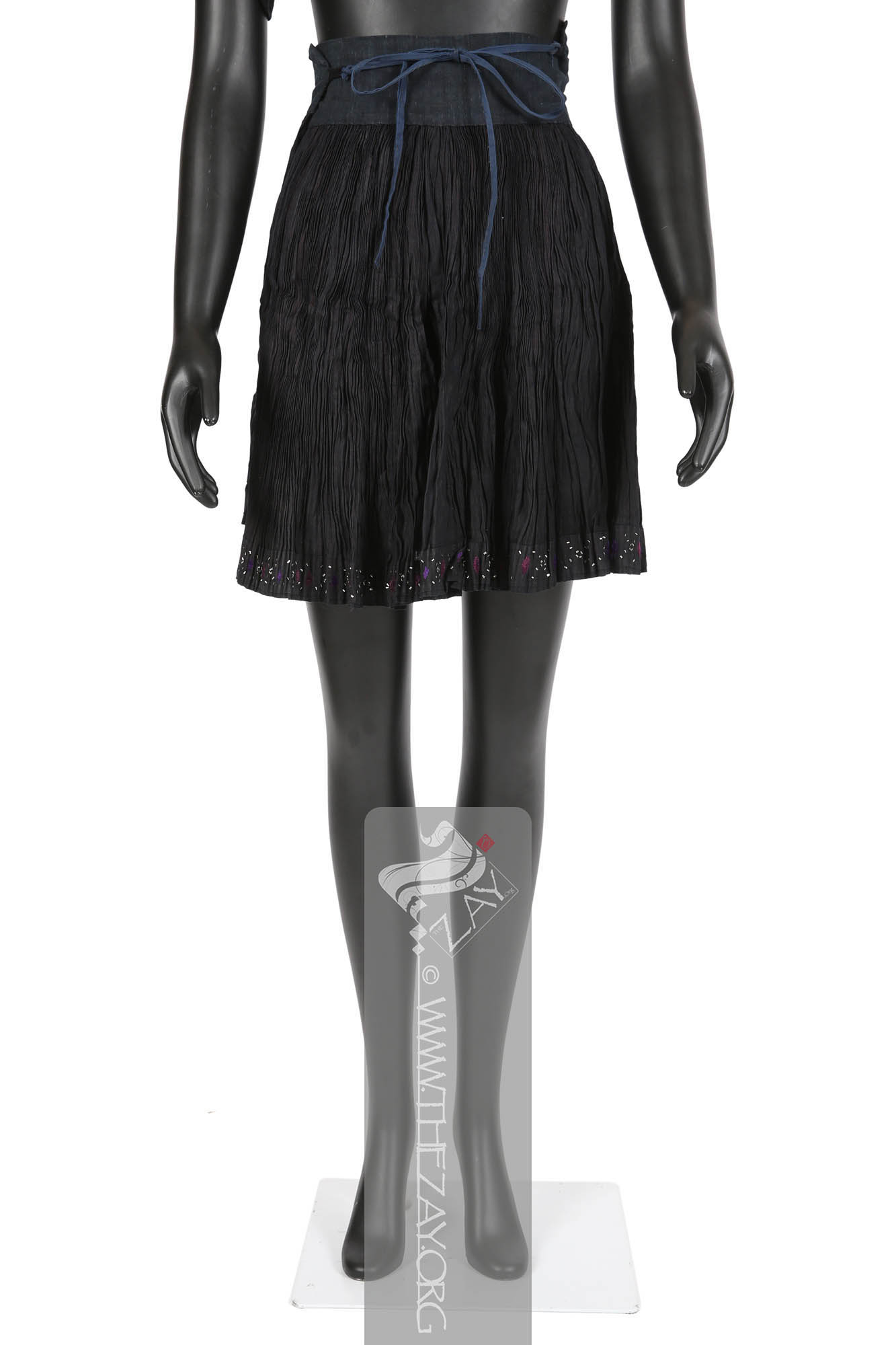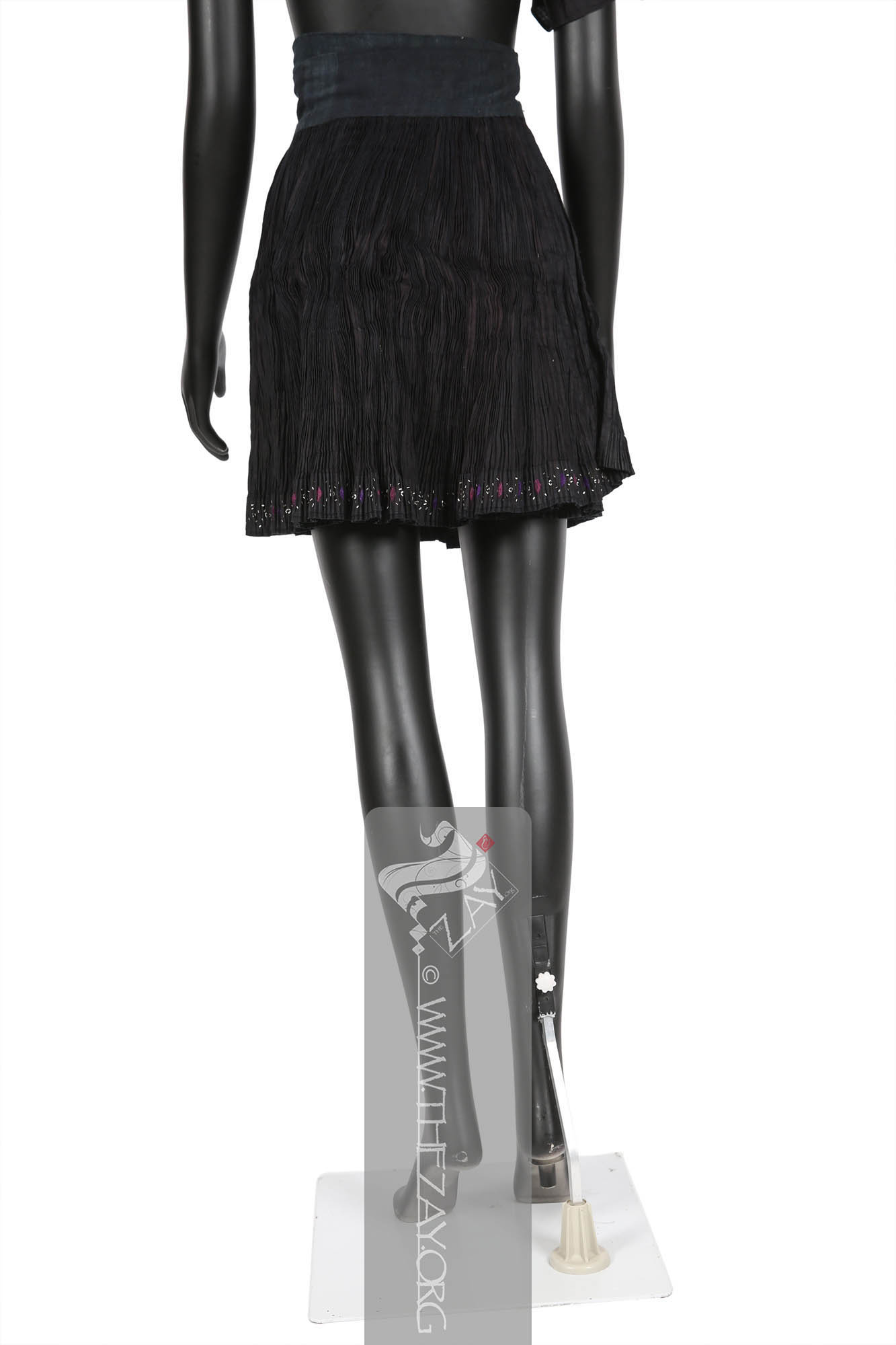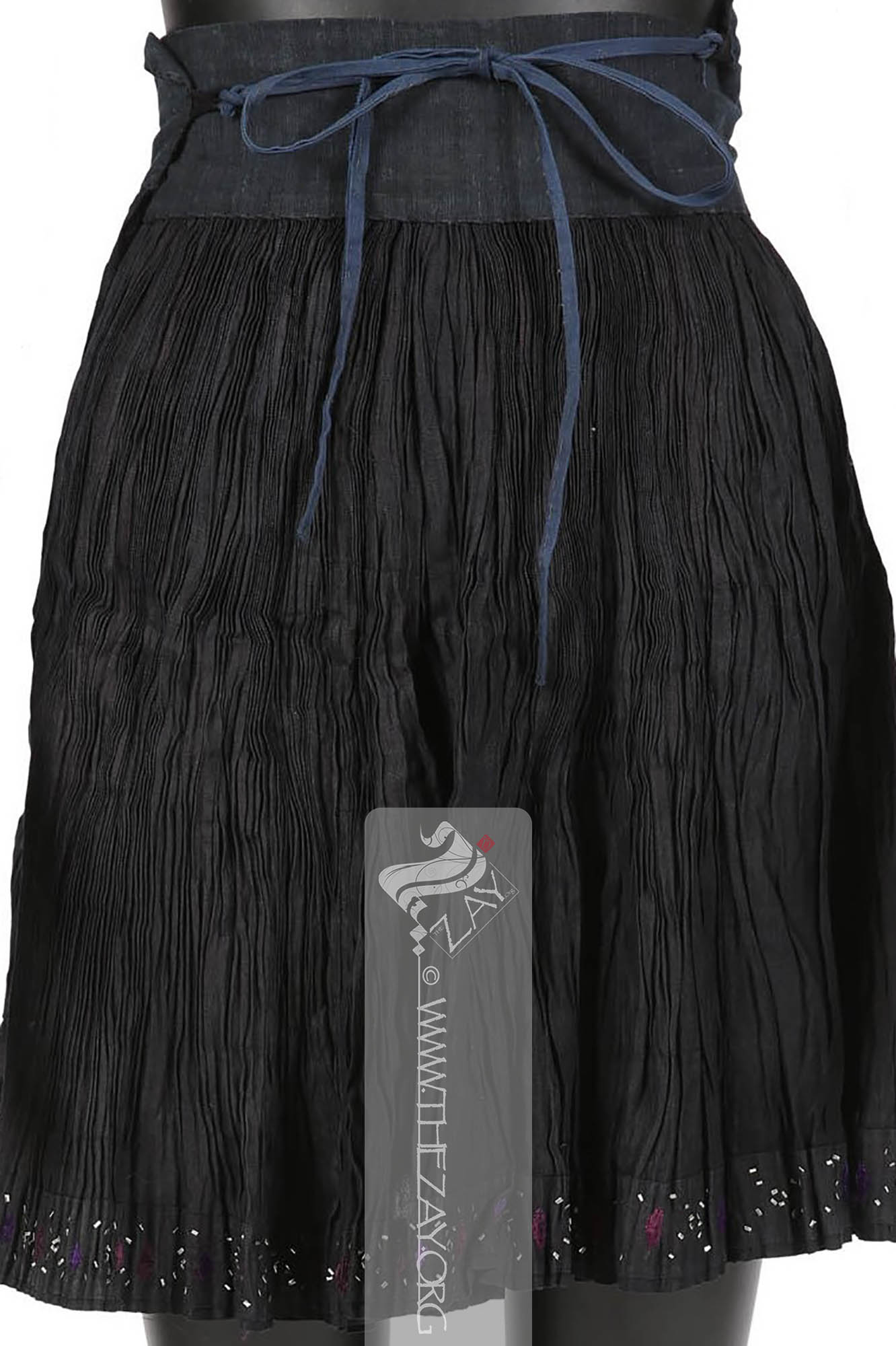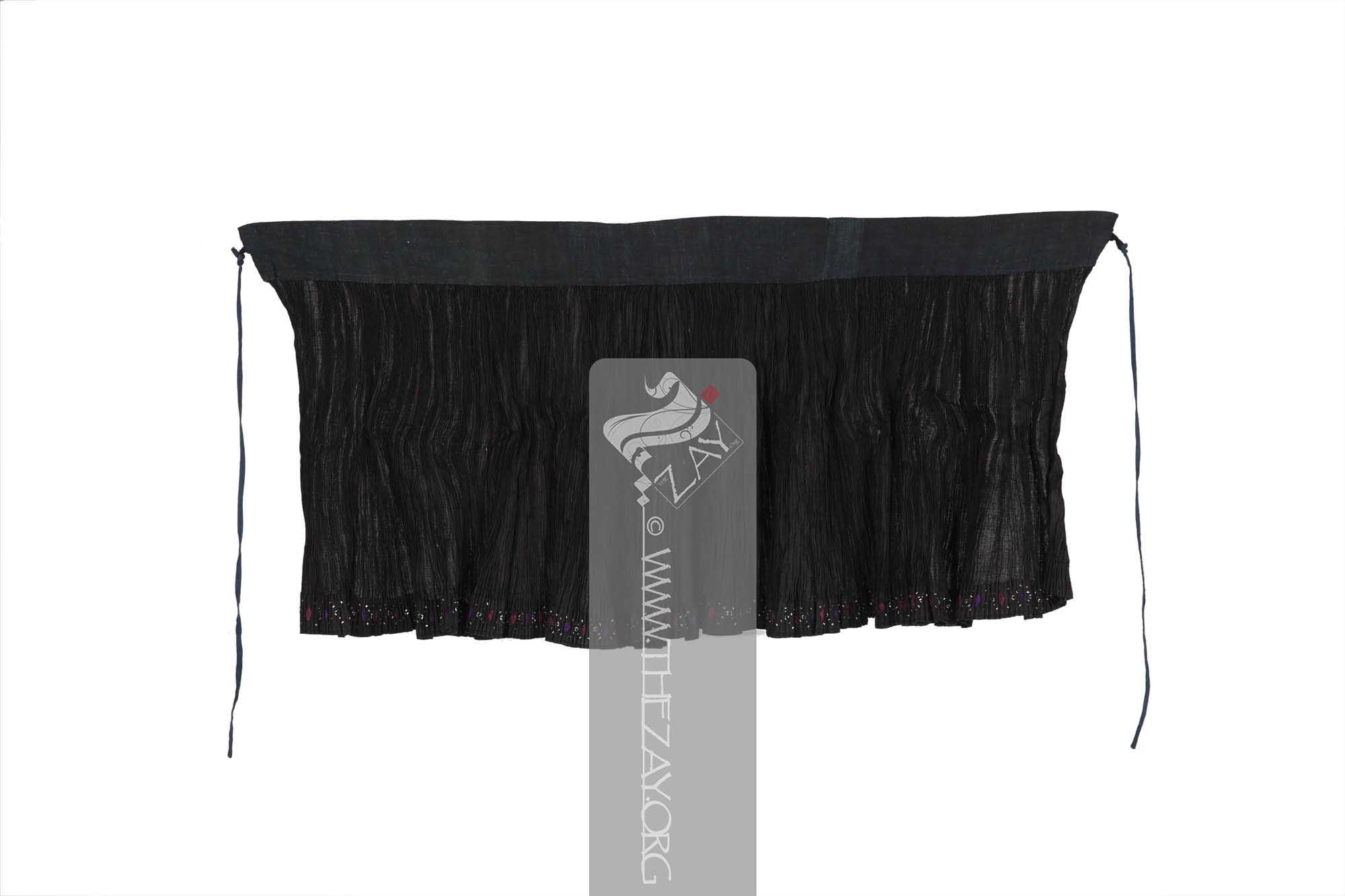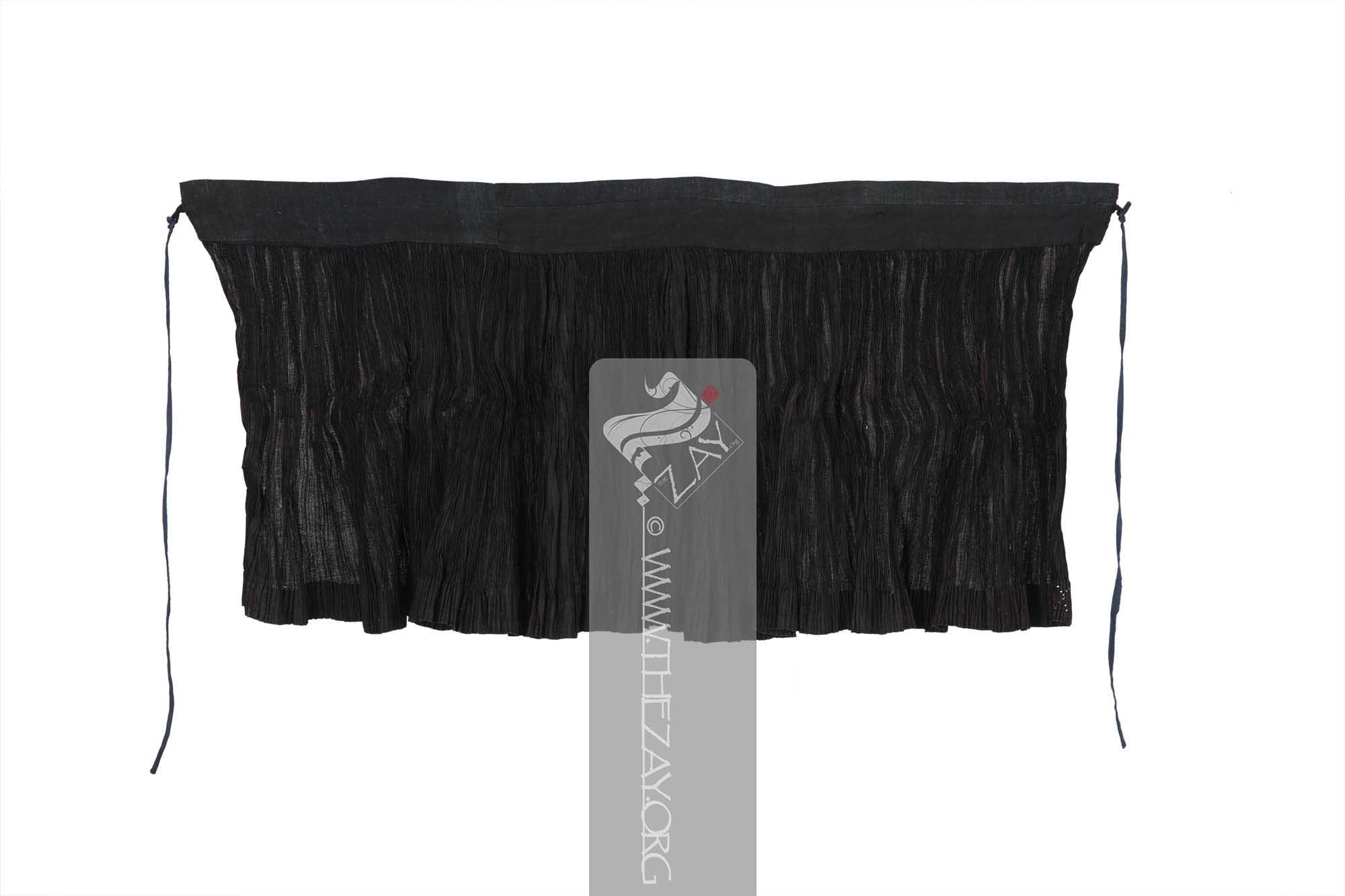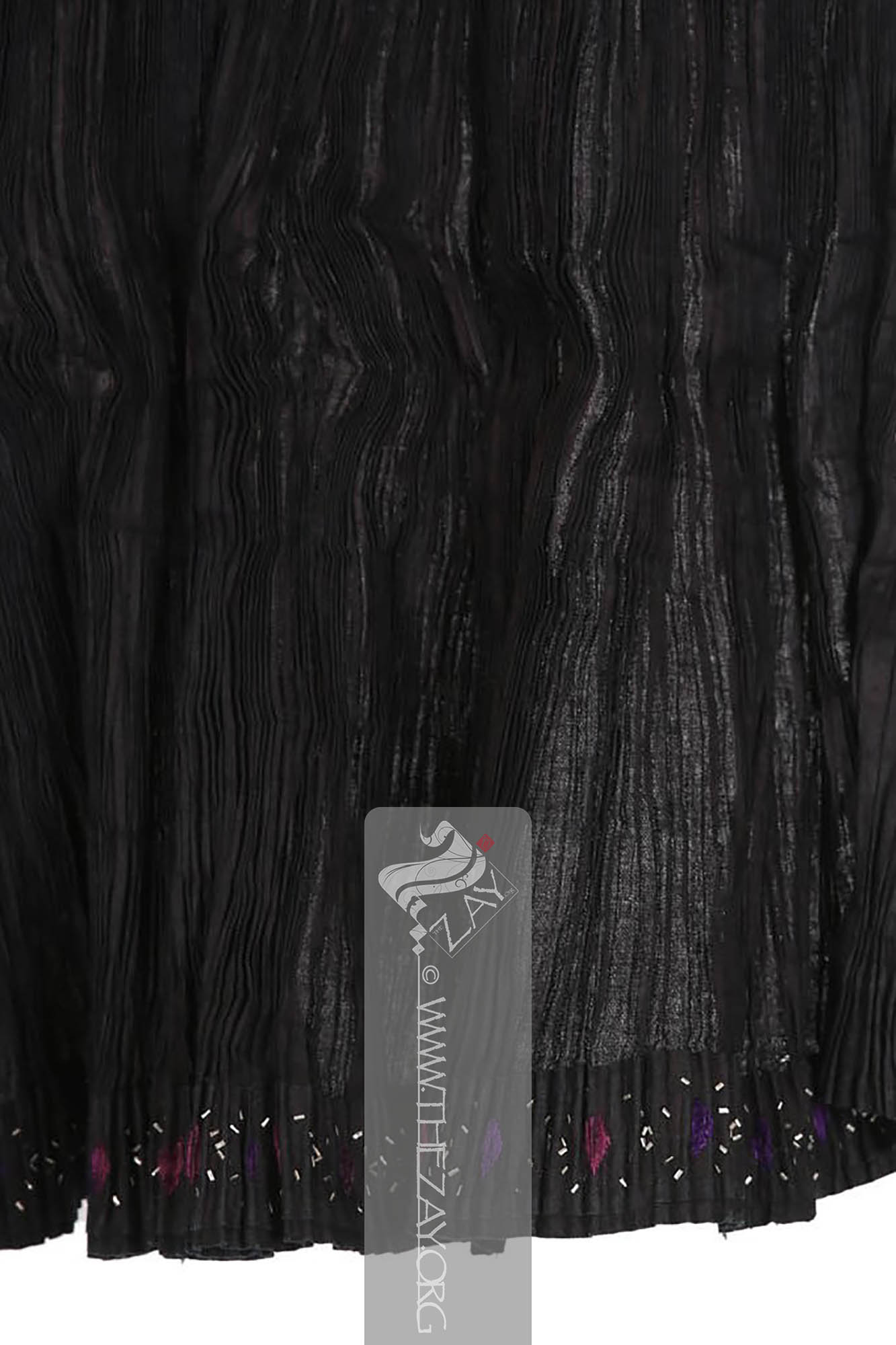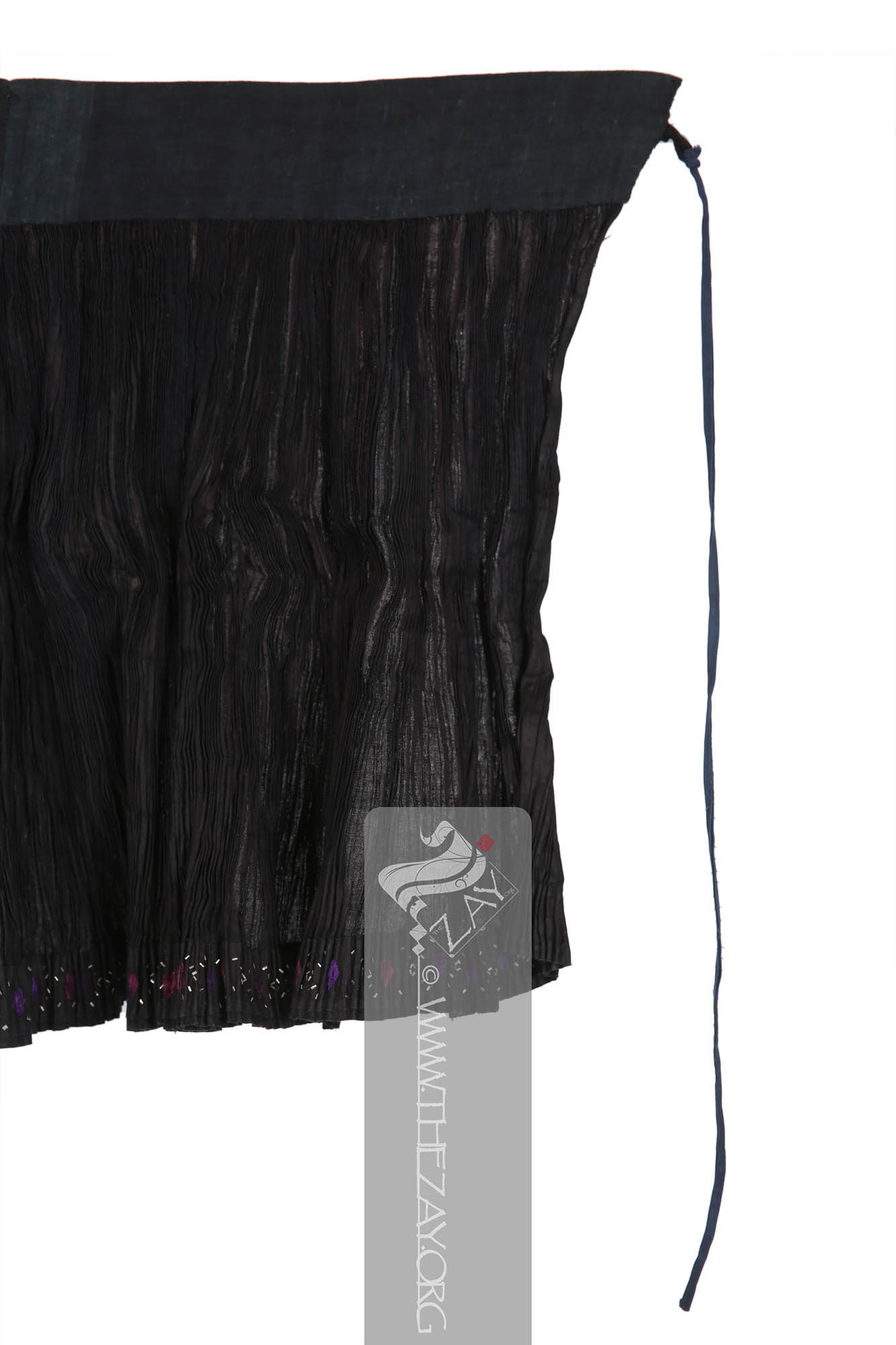Object NoteAn ensemble set containing two more pieces including a jacket (
ZI2015.500242 ASIA) and a waist ornament or apron (
ZI2015.500242b ASIA).
Object HistoryA part of an ensemble set along with a jacket (
ZI2015.500242 ASIA) and a waist ornament or apron (
ZI2015.500242b ASIA) was acquired by
Dr. Reem Tariq
Ṭariq: (Arabic; Synonym: tulle_bi_talli
Tūlle_bi_tallī: (French: Tulle – a city in France where fine material for veil was first made; Turkish: tel – wire; Synonym: tariq; talli; badla; khus_dozi ), series of small metal knots made on a woven net ground as embellishment. The term is commonly used in the North African Arab region specifically in Egypt.
; talli; badla; khus_dozi ), series of small metal knots made on a woven net ground as embellishment. The term is commonly used in the Levant Arab region specifically in Lebanon.
El Mutwalli
Dr. Reem Tariq
Ṭariq: (Arabic; Synonym: tulle_bi_talli
Tūlle_bi_tallī: (French: Tulle – a city in France where fine material for veil was first made; Turkish: tel – wire; Synonym: tariq; talli; badla; khus_dozi ), series of small metal knots made on a woven net ground as embellishment. The term is commonly used in the North African Arab region specifically in Egypt.
; talli; badla; khus_dozi ), series of small metal knots made on a woven net ground as embellishment. The term is commonly used in the Levant Arab region specifically in Lebanon.
el Mutwallī: Founder (CEO) of the Zay
Zay: (Arabic: costume, Pl. azyaā’), a set of clothes in a style typical of a particular country or historical period. Initiative, a public figure, speaker and author. An expert curator and consultant in Islamic art and architecture, interior design, historic costume, and UAE heritage. in 2015 from Rare Earth Tribal Art Gallery, Chiang Mai, Thailand.
It is an original ethnic wear for women of the Black Miao tribe of Jianhe County in Guizhou, China from the c. 1950s. It was constructed completely by hand by a woman of the tribe in c.1958.
Object Features This is an ethnic Miao/Hmong women’s pleated skirt made of black colour silk fabric. Primarily hand stitched featuring thin crushed pleats this wrap-around skirt embodies the cultural history of the Miao people – an ethnic group concentrated in the Guizhou province of south-west China.
It is quite easy to distinguish people of one Hmong tribe and their geographical location from the others simply by the wide variety of styles in their clothes. As such, this all-black ensemble clearly belongs to what is locally popular as the “Black Miao” tribe – called so because they predominantly wear black clothes – from Jianhe County, Guizhou.
Starched silk dyed in (
indigo
Indigo: (Latin: Indigo – India, synonym: nil
Nīl: (Latin: indigo), Arabised term for Indigo, a natural dye belonging to the ‘Indigofera Tinctoria’ species of plants that have been cultivated in East Asia, Egypt, India, and Peru since antiquity. According to Pliny the Elder, it was named after India as it was the source of the dye.), a natural dye belonging to the ‘Indigofera Tinctoria’ species of plants that has been cultivated in East Asia, Egypt, India, and Peru since antiquity. According to Pliny the Elder, it was named after India as it was the source of the dye. ) and completely hand stitched, this piece has a wide linen waistband with thin linen ribbons for securing it around the waist. The skirt is extensively pleated with a kind of binding technique. The fabric for this kind of pleated skirt is usually first soaked in starch and then pleated by hand, especially into a fine accordion pattern, then it is sprayed again with a sticky substance before sewing the pleats in place. Next, they are hung like cocoons for drying.
The hem of this skirt is intricately hand-stitched, a mark of fine craftsmanship and skill. A simple geometric (
satin_stitch
Satin_stitch: (Synonym: Damask Stitch), is a type of flat embroidery stitch that creates a satin like smooth and shiny surface by closely spaced stitches, covering an entire area or shape.) embroidery in the shape of a curved diamond in purple and burgundy
floss
Floss: (Old French: flosche – nap of velvet), is a type of silk fibre obtained from the cocoons of wild silkworms. It is characterized by its long, fluffy fibers that are not tightly woven, making it ideal for use in various textile applications such as embroidery, lace-making, and sewing. placed alternately adorns the hem of the skirt along with tiny pieces of metal – tin/silver – foils which are beaten into the fabric.
Interestingly, this type of metal foil-embedded embroidery can be seen in abundance across the Middle East and is called (
talli
Tallī: (Turkish: tel – wire, string), Gulf Arab – a woven braided trimming made with metal wire, threads and ribbons often sewn on detachable panels used as embellishments. Other – (Synonym: tulle_bi_talli
Tūlle_bi_tallī: (French: Tulle – a city in France where fine material for veil was first made; Turkish: tel – wire; Synonym: tariq; talli; badla; khus_dozi ), series of small metal knots made on a woven net ground as embellishment. The term is commonly used in the North African Arab region specifically in Egypt.
; tariq; badla; khus_dozi), series of small metal knots made on a woven net ground as embellishment.
), thus emphasising the connection along the old Silk Road.
Links 



